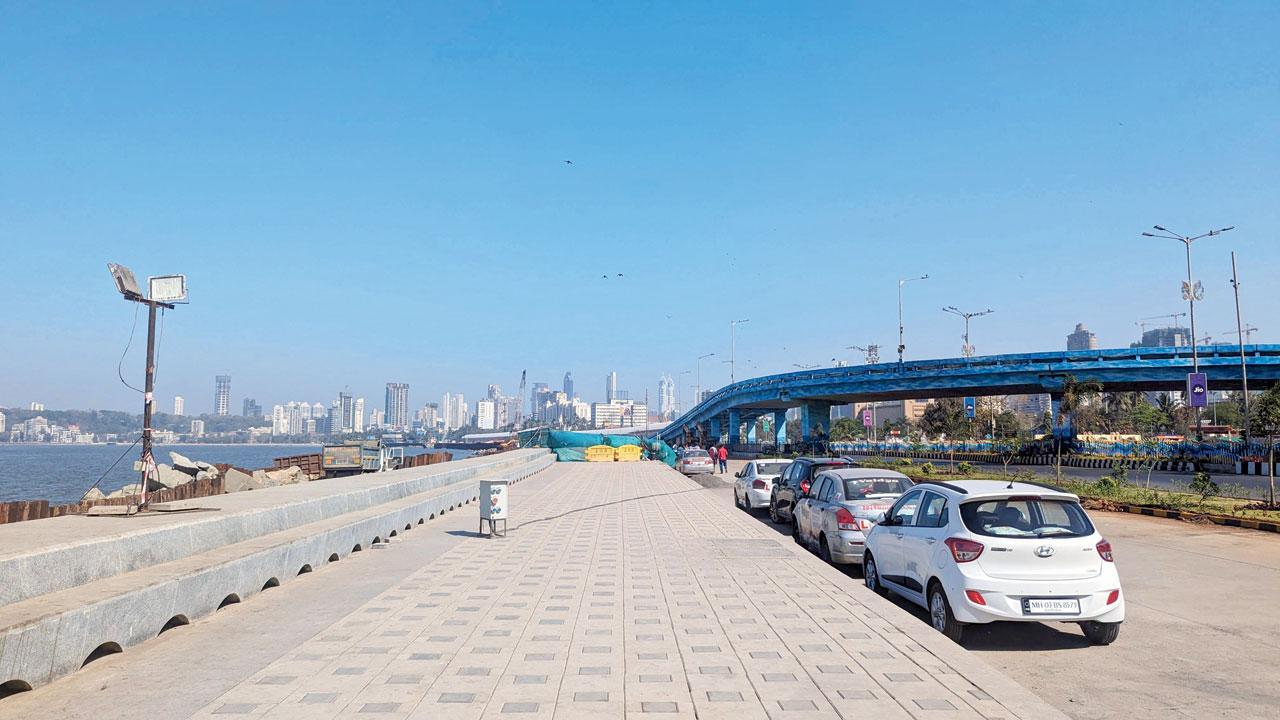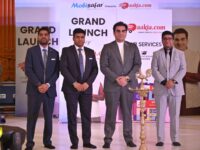Mumbai Coastal Road Inauguration: SoBo skyline changes, a 1st in a 100 years

The western tip of the coastline in south Mumbai is set to change forever for the first time in this century. The Worli to Marine Lines stretch of the Coastal Road will be opened to the public on Tuesday. The promenade will have an alternative north-south trunk route for mobility and also much-needed recreational public open spaces/greenery.
The city has built its foundations over reclamations and land fillings from scattered seven islets to becoming the financial capital over the last two centuries. The first major reclamation took place in 1708 to construct the causeway between Mahim and Sion. The second one in 1772, to stop the ingress of water and the consequent flooding of central Mumbai, and to connect Mahalaxmi and Worli.
The proposed road is divided in two parts: Princess Flyover to Worli and Bandra to Kandivli
This causeway was named Hornby Vellard, sealing the Great Breach (Breach Candy) between Dongri, Malabar Hill, and Worli. This was followed by multiple small and big land-fillings, and the major one discussed is the Backbay Reclamation planned in the 1860s but taken up majorly during the 1920s, exactly a century ago, until Marine Drive came up. The last bit of major reclamations occurred during the 1960s and early 70s when Nariman Point and Cuffe Parade came up.
Also Read: Mumbai Coastal Road project: Here`s all you need to know
Biggest-ever reclamation
But the Coastal Road reclamation is one of the biggest Mumbai has witnessed in the last 100 years, with so far 100 hectares of land being reclaimed from the sea. The coastal road project has a length of 29.20 km, which lies on the western coastal stretch of the city. The proposed road length is divided into two parts: from Princess Flyover to Worli Sea Link and Bandra Sea Link to Kandivli Junction. India’s largest 12.19-metre diameter tunnel has been constructed 20m below the shore of the Arabian Sea and 70 metres below Malabar Hill with three lanes, with one lane reserved for emergency transport. About 70 hectares of new green space are being added to the city as part of the Coastal Road project, officials said.
The Marine Drive bifurcates into the Coastal Road a bit ahead of the Princess Street Flyover (Shamaldas Gandhi Marg) curve, just opposite the Marine Lines railway station. While the new Coastal Road (four lanes, three lanes in tunnel) going towards Worli that enters an underground tunnel lies to the extreme left of the old road, the Coastal Road coming from the Worli-end to Mantralaya comes out of the tunnel between the old south-bound road and the road going to Marine Lines station.
Promenade old vs. new
On Sunday morning, final finishing touches, like watering plants and polishing, were in progress on this road with four lanes (three in tunnel), which is expected to open up on Monday. While the Coastal Road will be inaugurated at 11 am by Chief Minister Eknath Shinde, Mumbaikars will be able to travel only from 8 am on Tuesday, March 12.
The road going towards Worli is also almost ready, but works of covering the promenade with a green patch and concreting the land above the tunnel were ongoing in patches. It is expected to open by May 2024.
While the old and original Marine Drive Art Deco promenade that won the UNESCO’s World Heritage tag for Victorian Gothic and Art Deco Ensembles of Mumbai, showcasing a spectacular ensemble of 94 historic buildings, remains undisturbed, the promenade between Marine Lines station and Charni Road station is more affected by the coastal road work.
It is full of machinery, construction equipment, and labourers. “The major portion of underground roads has been built and land-filling completed and now concreting and beautification works have begun,” an official said.
“One can even take the stroll on this part of the Marine Drive as earlier, but with added green space and walk all the way till the century-old Kenndey Sea Face lamp post dated 1920 erected to commemorate the sea face wall there,” he added.
Citizen voices
Chetan Bordawekar, Citizen Transport Committee
‘All this will jam south Mumbai. There are so many signals on Netaji Subhash Road (Marine Drive) towards Churchgate-Nariman Point, and I feel that there will be large traffic from Worli that will come at a fast pace. But I fear it will get stuck on these signals. Plus, traffic from Wilson College will also be added. So, the volume will be huge. Quick traffic dispersal will be necessary; otherwise, it will result in a jam,’ Chetan Bordawekar of the Citizen Transport Committee said.
AV Shenoy, Activist
‘I wonder who will travel by BRTS. Most traffic on this route is from Pedder Road, Bhulabhai Desai Road, Hughes Road, and Napean Sea Road. These passengers need stops. Is any provision made for their entry/exit? BEST buses will still use the old roads. Only point-to-point private buses like Cityflo may use Coastal Road. BRTS’s promise was only to pacify activists. Let us observe for some time. Like the sea link, let us be happy with whatever resultant reduced congestion occurs on the above roads due to the disappearance of cars,’ activist AV Shenoy said.
Indrani Malkani, Chairman, V Citizens Action Network
‘It’s a major infrastructure creation and very commendable at the pace it is being carried out. The opening, even the one lane, will surely ease the traffic movement. The challenge though will be at the Breach Candy, Tata Garden exit point. I hope bottlenecks are not created at this point. Of course, all will eventually smoothen once both lanes become operational,” Indrani Malkani, chairman, V Citizens Action Network (VCAN).
New Coastal Road restrictions
No night/weekend rides
The Coastal Road will be open for all vehicles between 8 am to 8 pm from March 12, Monday to Friday. No traffic on Saturday and Sunday for construction
No photography
It is strictly forbidden to stop vehicles and get off vehicles and take pictures and videos. Legal action will be taken
Who cannot use it?
All types of heavy vehicles, (excluding BEST/ST buses/passenger-carrying vehicles)
All types of two-wheelers, cycles and disabled person motorcycles/scooters (including sidecars)
All types of three-wheelers, animal-drawn carts, handcarts, and pedestrians
Speed restrictions: On a straight road, the speed limit is 80 km, for the tunnel it is 60 km and at turning points and entry/exit points, it is 40 km
Entry points
Entry from Bindu Madhav Thackeray Junction (Worli), Rajani Patel Junction or Lotus Junction (near Haji Ali) and Amarsons Garden
Exit points
Exits at Amarsons Garden and Marine Drive which is the Princess Street Bridge
Note: If entering from the Bindu Madhav Thackeray Junction (Worli), the timings are 8 am to 5 pm. At all other entry points, timings are 8 am to 8 pm
29.20 km
Total length of the Coastal Road project

Atul Tiwari is a seasoned journalist at Mumbai Times, specializing in city news, culture, and human-interest stories. With a knack for uncovering compelling narratives, Atul brings Mumbai’s vibrant spirit to life through his writing.





